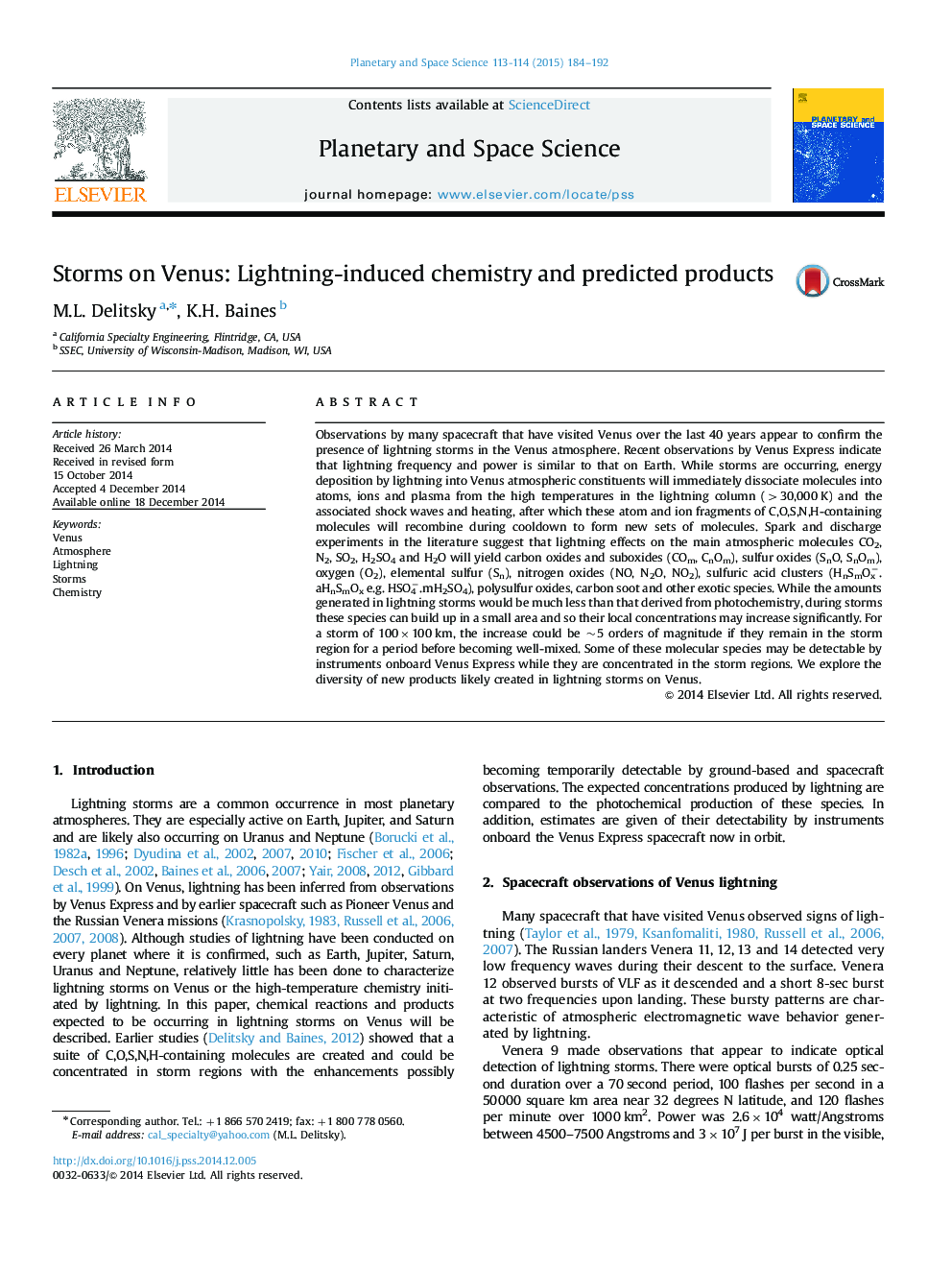| کد مقاله | کد نشریه | سال انتشار | مقاله انگلیسی | نسخه تمام متن |
|---|---|---|---|---|
| 8143221 | 1523926 | 2015 | 9 صفحه PDF | دانلود رایگان |
عنوان انگلیسی مقاله ISI
Storms on Venus: Lightning-induced chemistry and predicted products
ترجمه فارسی عنوان
طوفان زهره: شیمیایی ناشی از رعد و برق و محصولات پیش بینی شده
دانلود مقاله + سفارش ترجمه
دانلود مقاله ISI انگلیسی
رایگان برای ایرانیان
کلمات کلیدی
سیاره زهره، اتمسفر، رعد و برق، طوفان علم شیمی،
موضوعات مرتبط
مهندسی و علوم پایه
علوم زمین و سیارات
فیزیک زمین (ژئو فیزیک)
چکیده انگلیسی
Observations by many spacecraft that have visited Venus over the last 40 years appear to confirm the presence of lightning storms in the Venus atmosphere. Recent observations by Venus Express indicate that lightning frequency and power is similar to that on Earth. While storms are occurring, energy deposition by lightning into Venus atmospheric constituents will immediately dissociate molecules into atoms, ions and plasma from the high temperatures in the lightning column (>30,000Â K) and the associated shock waves and heating, after which these atom and ion fragments of C,O,S,N,H-containing molecules will recombine during cooldown to form new sets of molecules. Spark and discharge experiments in the literature suggest that lightning effects on the main atmospheric molecules CO2, N2, SO2, H2SO4 and H2O will yield carbon oxides and suboxides (COm, CnOm), sulfur oxides (SnO, SnOm), oxygen (O2), elemental sulfur (Sn), nitrogen oxides (NO, N2O, NO2), sulfuric acid clusters (HnSmOxâ.aHnSmOx e.g. HSO4â.mH2SO4), polysulfur oxides, carbon soot and other exotic species. While the amounts generated in lightning storms would be much less than that derived from photochemistry, during storms these species can build up in a small area and so their local concentrations may increase significantly. For a storm of 100Ã100Â km, the increase could be ~5 orders of magnitude if they remain in the storm region for a period before becoming well-mixed. Some of these molecular species may be detectable by instruments onboard Venus Express while they are concentrated in the storm regions. We explore the diversity of new products likely created in lightning storms on Venus.
ناشر
Database: Elsevier - ScienceDirect (ساینس دایرکت)
Journal: Planetary and Space Science - Volumes 113â114, August 2015, Pages 184-192
Journal: Planetary and Space Science - Volumes 113â114, August 2015, Pages 184-192
نویسندگان
M.L. Delitsky, K.H. Baines,
